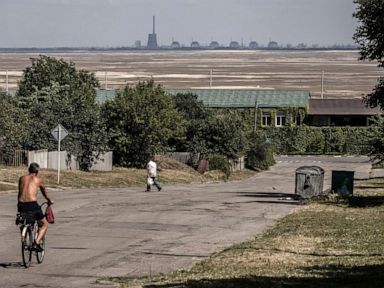
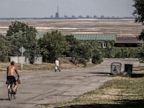

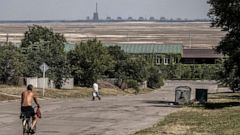
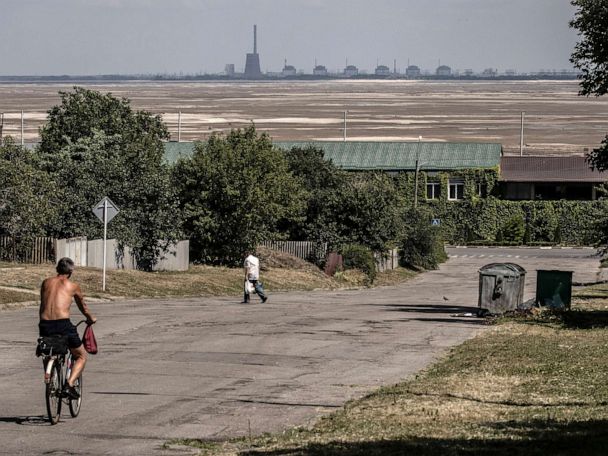
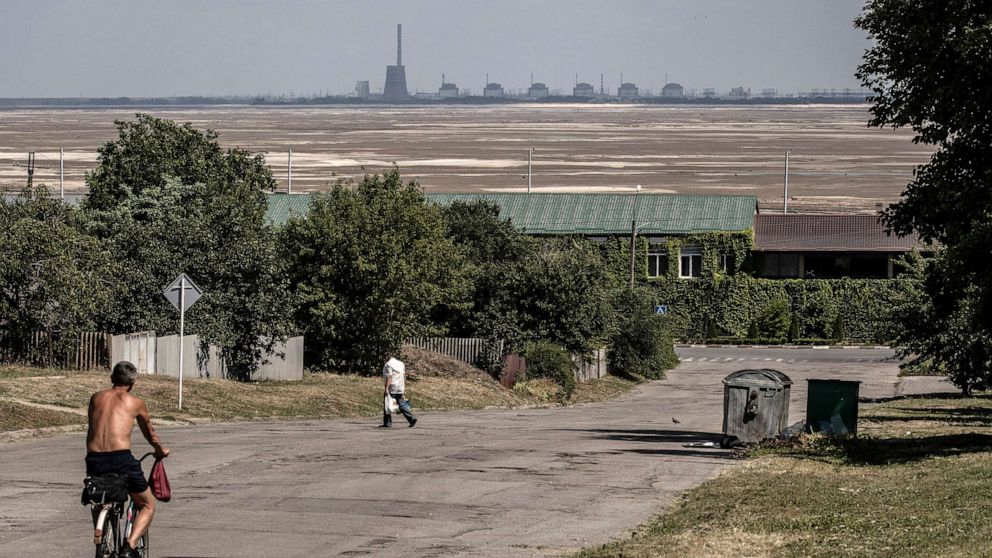
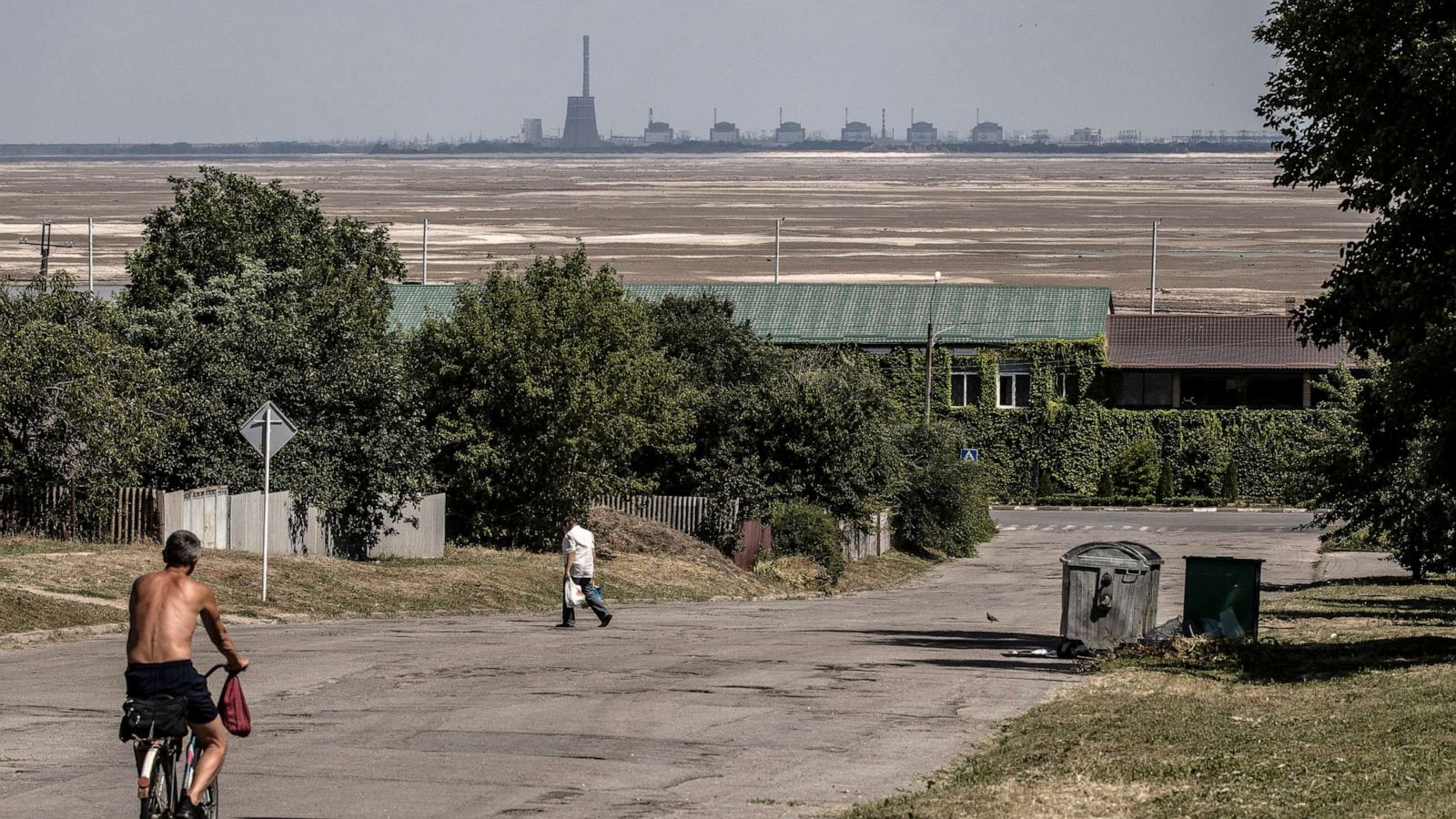
Ukrainian officials have been issuing warnings that Russia plans to blow up the Zaporizhzhia Nuclear Power Plant — the largest nuclear plant in Europe — for months, but those warnings have escalated in recent days.
Ukrainian President Volodymyr Zelenskyy has even warned that Russia has placed objects that could be explosives on the roof of the power plant. In an interview with ABC News, Zelenskyy said Russia could stage an explosion at the Zaporizhzhia Nuclear Power Plant to halt Ukrainian advances on the battlefield.
But experts say the cold shutdown of the plant’s six reactors has largely curbed much of the risk that could come from an explosion at the nuclear power plant.
“We’re actually very, very lucky. Any incident would not involve an active reactor, which could cause enormous environmental danger and damage and deaths,” William Alberque, the director of strategy, technology and arms control at the International Institute for Strategic Studies, told ABC News.
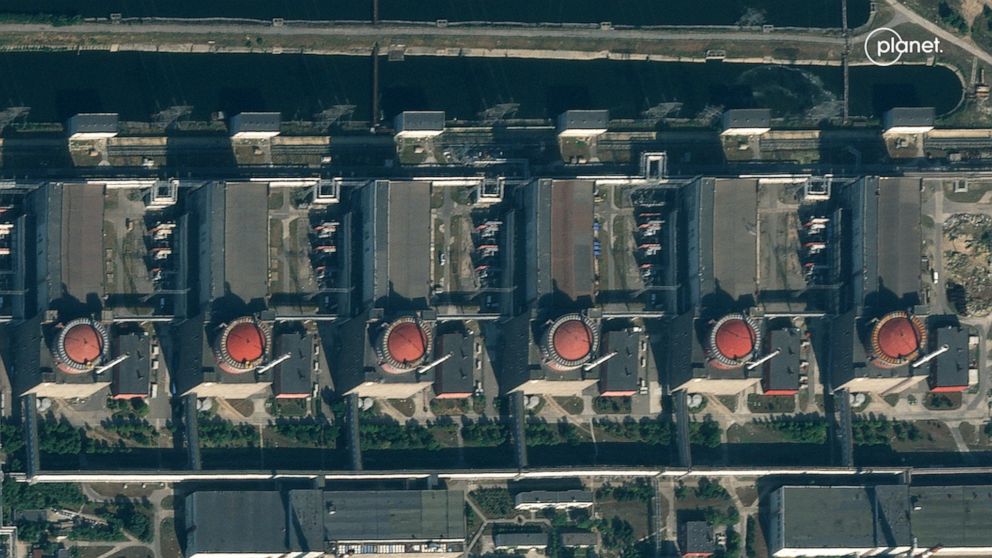
A satellite image of the Zaporizhzhia Nuclear Power Plant in Southern Ukraine, July 5, 2023.
AP
Russian troops stormed and took control of the plant on March 4, 2022. Despite Ukraine’s energy company still operating the power plant, Russia has at times limited access to parts of the plant, according to the International Atomic Energy Agency.
Last October, the IAEA said there are mines along the perimeter of the Zaporizhzhia power plant, but not inside it.
On Friday, IAEA experts at the site of the power plant were given additional access to the plant and reported that they have not observed any visible indications of mines or explosives, according to Director General Rafael Mariano Grossi. But, the IAEA said the experts still need additional access to the plant.

Rafael Mariano Grossi, Director General of the International Atomic Energy Agency, speaks during an interview in Tokyo, Japan, July 7, 2023.
Shuji Kajiyama/AP
Alberque said that the IAEA has enough access to the plant to theoretically be able to see if Russia was taking steps to blow up the plant from the inside. However, he said warnings from Ukrainian officials should be taken seriously.
“Anytime [Ukraine and the U.S.] think that a false flag attack is going to happen, they talk about it early, often and loudly. And this is, I think, an attempt to deter Russia from doing something that they’re concerned may happen,” Alberque said.
Experts say the threat should be taken seriously.
“It is a real threat in the same way that the warnings of the mining of the Kakhovka Dam turned out in the end to be realistic,” Keir Giles, a senior consulting fellow of the Russia and Eurasia Programme at London think tank Chatham House, told ABC News last month. “And the advantage for Russia is that it could create the kind of nuclear incident that would be seriously concerning for not just Ukraine’s western backers but the whole world without necessarily incurring the consequences that a nuclear strike would.”
How could Russia blow up the plant?
Alberque said there are four areas in the plant that Russia could be planning to attack: They could blow up the dry fuel storage, blow up the wet fuel storage, blow up one of the reactor buildings itself or try to melt the nuclear fuel that’s still in the reactor.
“If they hit it from the outside and tried to say that Ukraine did it, they’d be hitting a reactor building that’s incredibly well reinforced. These are not the RBMK reactors that Chernobyl was. These are DVRs, they have very big containment on the outside — lots of concrete. So you’d have to hit it with a lot of weaponry in order to do any damage that’s of any significance to chance release,” Alberque said.
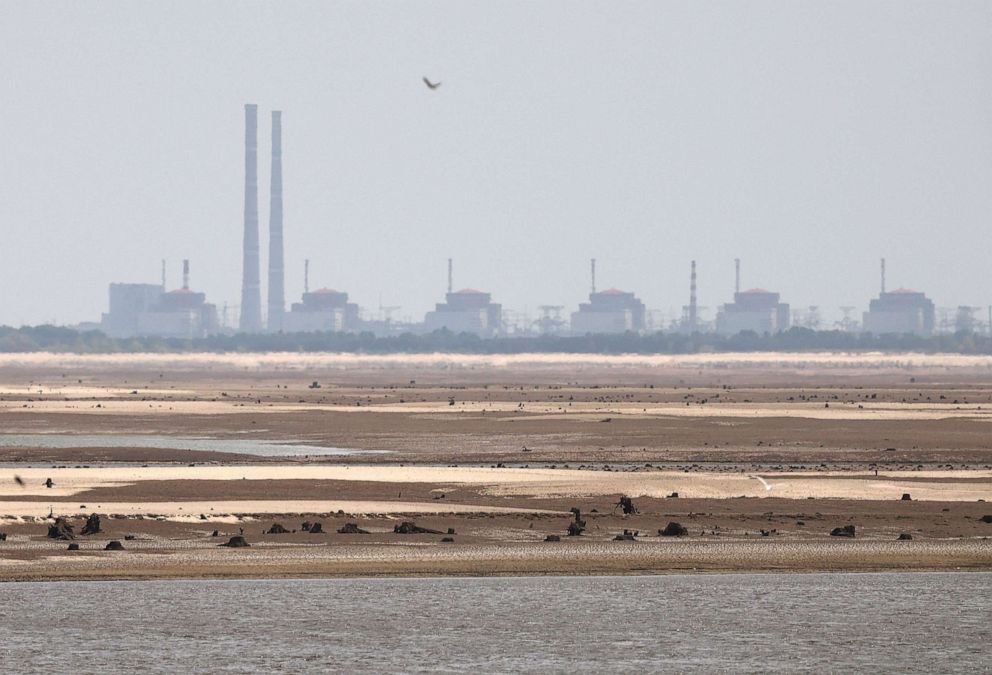
The Zaporizhzhia nuclear power plant, seen from the Ukrainian city of Nikopol on July 7, 2023. The head of the UN’s nuclear watchdog said on July 7, 2023 that it was making progress on inspecting several areas of the Zaporizhzhia nuclear plant in Ukraine, after claims it had been mined.
Anatolii Stepanov/AFP via Getty Images
“None of these scenarios rise to the level of a Fukushima or Chernobyl,” Alberque said, referring to two infamous meltdowns at nuclear power plants, “unless they blow it up right from the inside and they guard it to make sure that no one can do anything about it for a couple of weeks and the fuel builds up and then explodes.”
With the IAEA on site, Alberque said this is not currently a credible scenario. Alberque said the IAEA is monitoring the reactors very closely and it is still a fully functioning facility so it would be hard to plan such an explosion from inside without IAEA’s on-site team seeing it.
The least dangerous of the four scenarios, blowing up the dry fuel storage, would impact people in the direct downwind, who would have an increased risk of cancer in their lifetime, Alberque said.
The most dangerous scenario would be to blow up the reactor vessel inside the building itself, Alberque said. This would be similar to what Russia did when it blew up Kakhovka Dam, a strategically vital dam and hydroelectric power plant, in June.
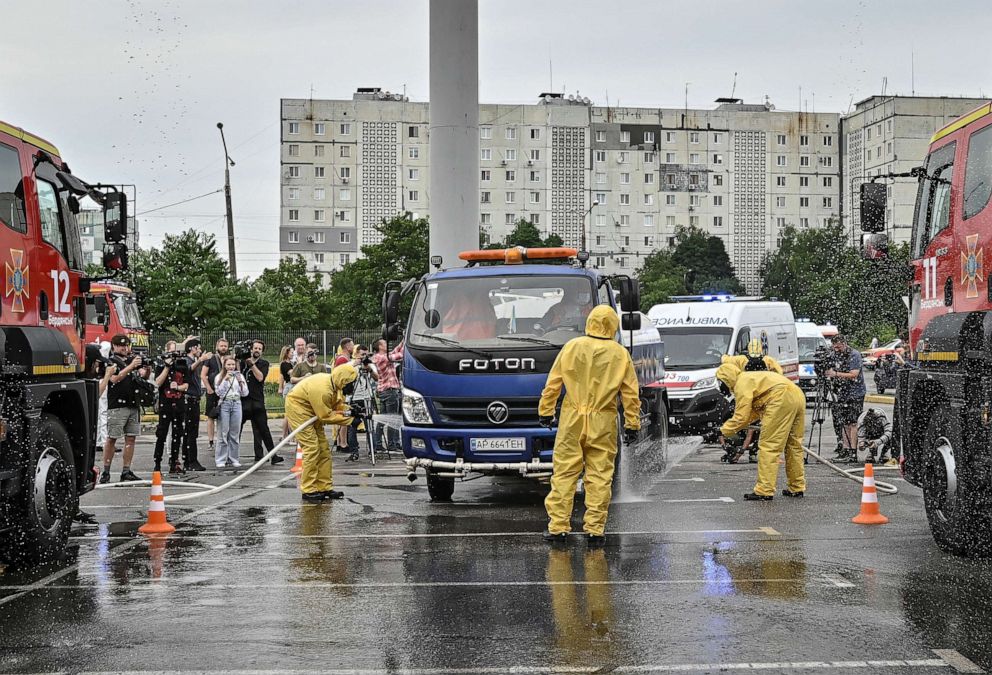
First responders attend anti-radiation drills to prepare for an emergency situation at Zaporizhzhia Nuclear Power Plant, amid Russia’s attack on Ukraine, in Zaporizhzhia, Ukraine, June 29, 2023.
Reuters
“You’re not talking about opening a live reactor the way that Chernobyl was, but you would be burning the fuel institute, probably in the hopes that it melts through the floor and causes some Fukushima-type event. But that would take a long time to occur,” Alberque said.
Chernobyl, also a nuclear power plant in Ukraine, melted down in April 1986 during a safety test. The Fukushima meltdown took place in March 2011 when a massive earthquake caused a tsunami that damaged the plant on the east coast of Japan.
How damaging could an explosion of the plant be?
Alberque said any explosion at Zaporizhzhia would be far less damaging than the dam that was blown up by Russia last month.
“If something bad does happen, it’s not even going to be as devastating as that flood was. That flood was far more devastating, far bigger environmental impact, far more deaths than anything that they could do with the reactor now,” Alberque said.
More than 100 people were killed when the dam in Kherson was blown up in late June, according to the General Staff of the Armed Forces of Ukraine.
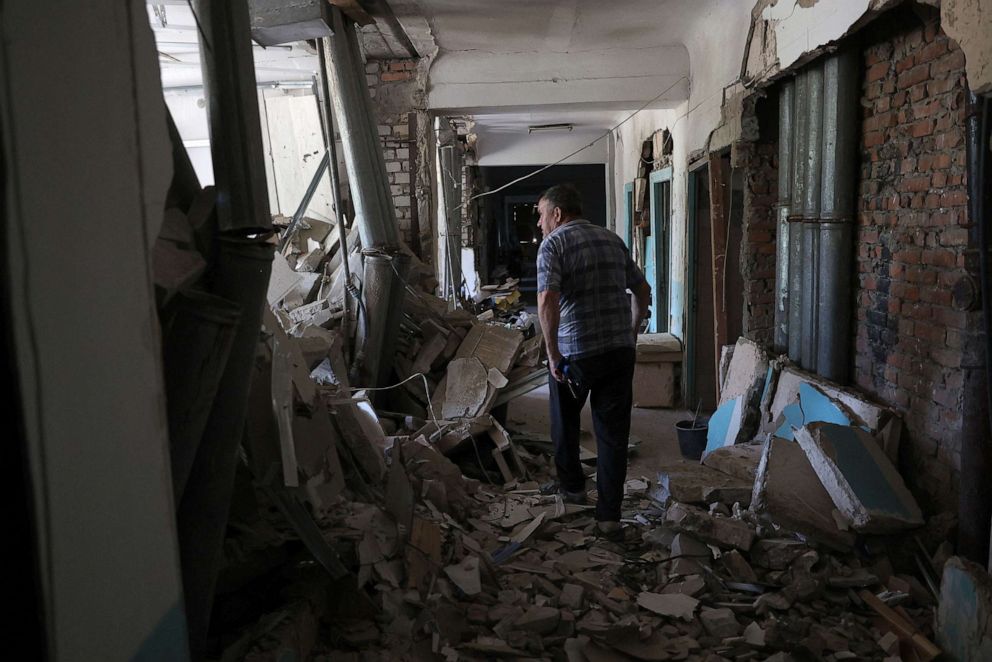
A resident looks out from inside the destroyed city hospital of Hulyaypole, Zaporizhzhia Region, Ukraine, July 6, 2023.
Anatolii Stepanov/AFP via Getty Images
The American Nuclear Society released similar guidance, saying the reactors being shutdown limits the risk of fallout from an explosion. “Our experts have carefully considered ‘worst case scenarios,’ including bombardment and deliberate sabotage of the reactors and spent fuel storage canisters. They cannot foresee a situation that would result in radiation-related health consequences to the public,” the American Nuclear Society said in a statement this week.
The American Nuclear Society said with the reactors shutdown for over 10 months, they are not making enough heat to prompt a radiological release. “ZNPP is designed to withstand natural and man-made hazards. Thick, steel-reinforced concrete containment buildings protect the reactor cores and are designed to keep any radioactive materials isolated from the environment,” the American Nuclear Society said.

Residents pass along a street in Nikopol, with the Zaporizhzhia Nuclear Power Plant in the background, behind an expanse of sand exposed after the destruction of the Nova Kakhovka Dam, in Ukraine, on July 3, 2023.
The New York Times via Redux
“In the unlikely event that containment structures were breached, any potential release of radiological material would be restricted to the immediate area surrounding the reactors. In this regard, any comparison between ZNPP and ‘Chernobyl’ or ‘Fukushima’ is both inaccurate and misleading,” according to the American Nuclear Society.
Alberque said people living within 20 miles of the reactor should be aware of safety procedures. In the event of a warning that something has occurred, they should go inside, close the windows and try to recirculate air from the inside. Anyone who is outside should completely remove their clothes and completely wash down everything as quickly as possible.
ABC News’ Zoe Magee and Will Gretsky contributed to this report.
